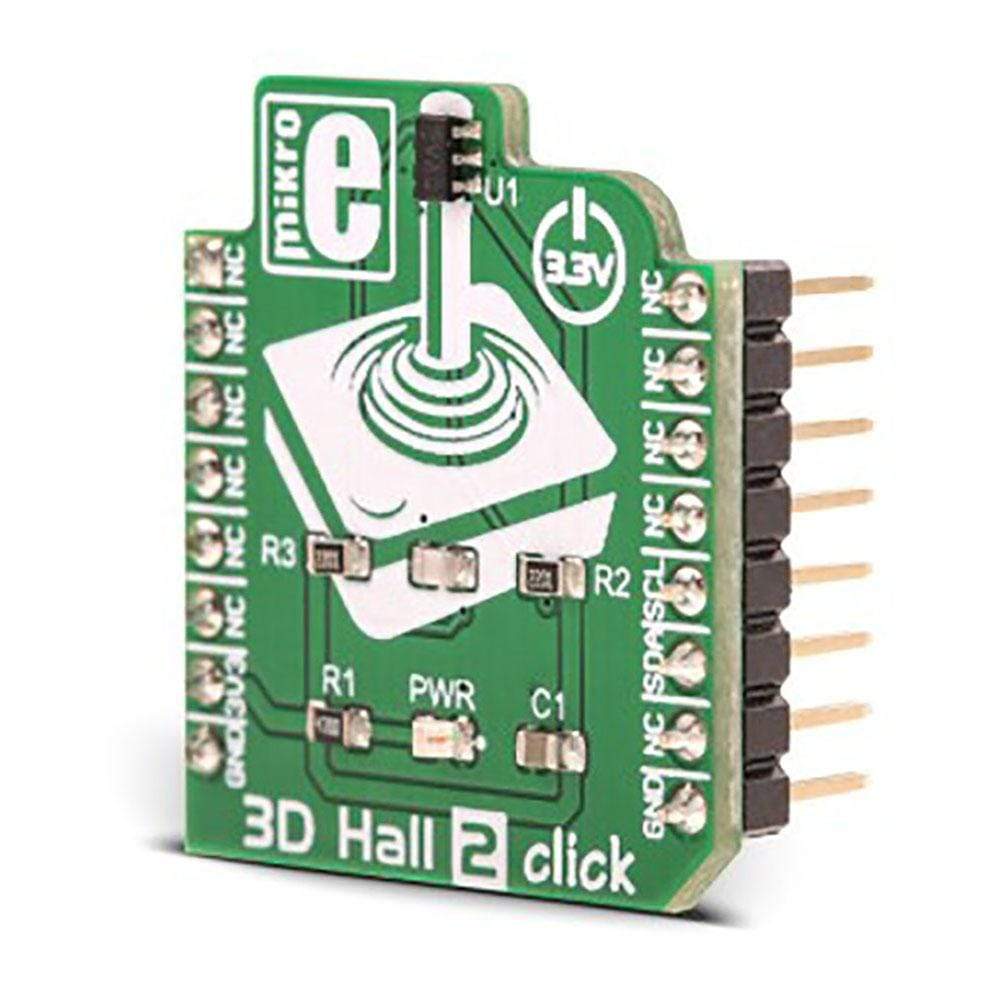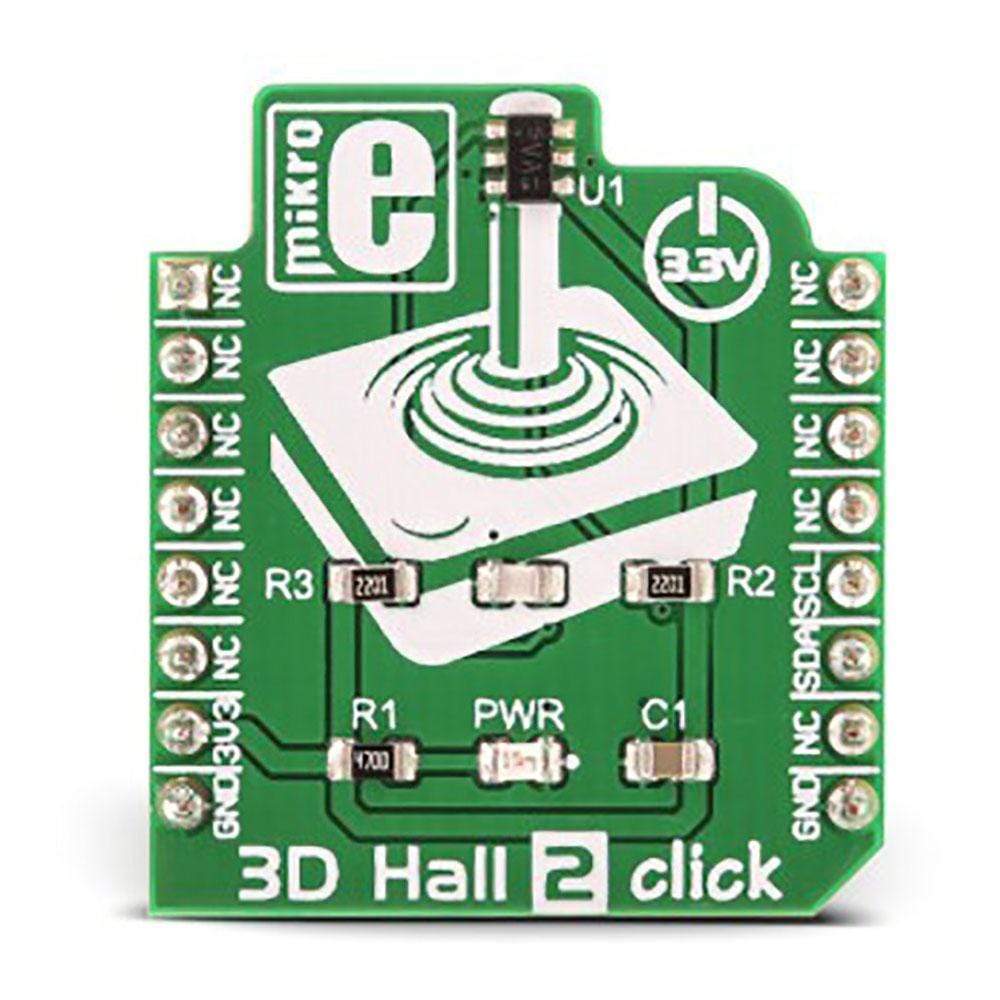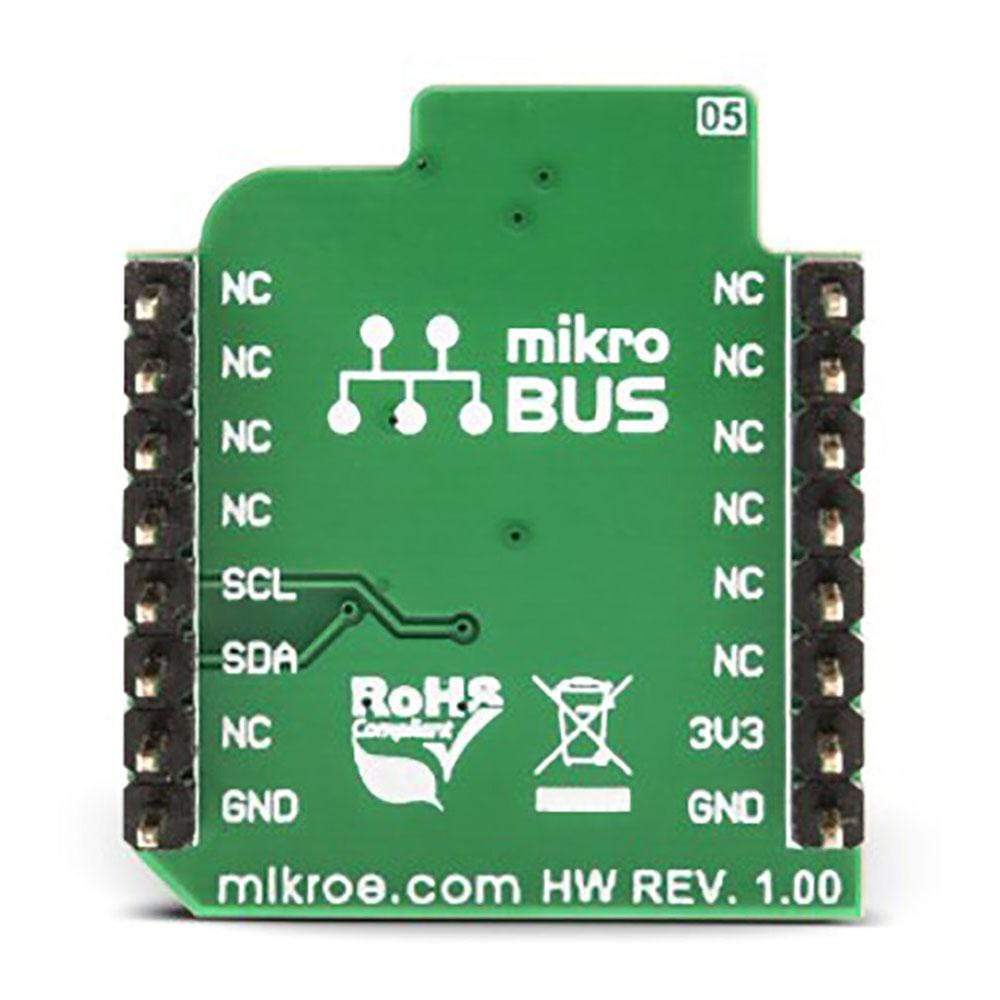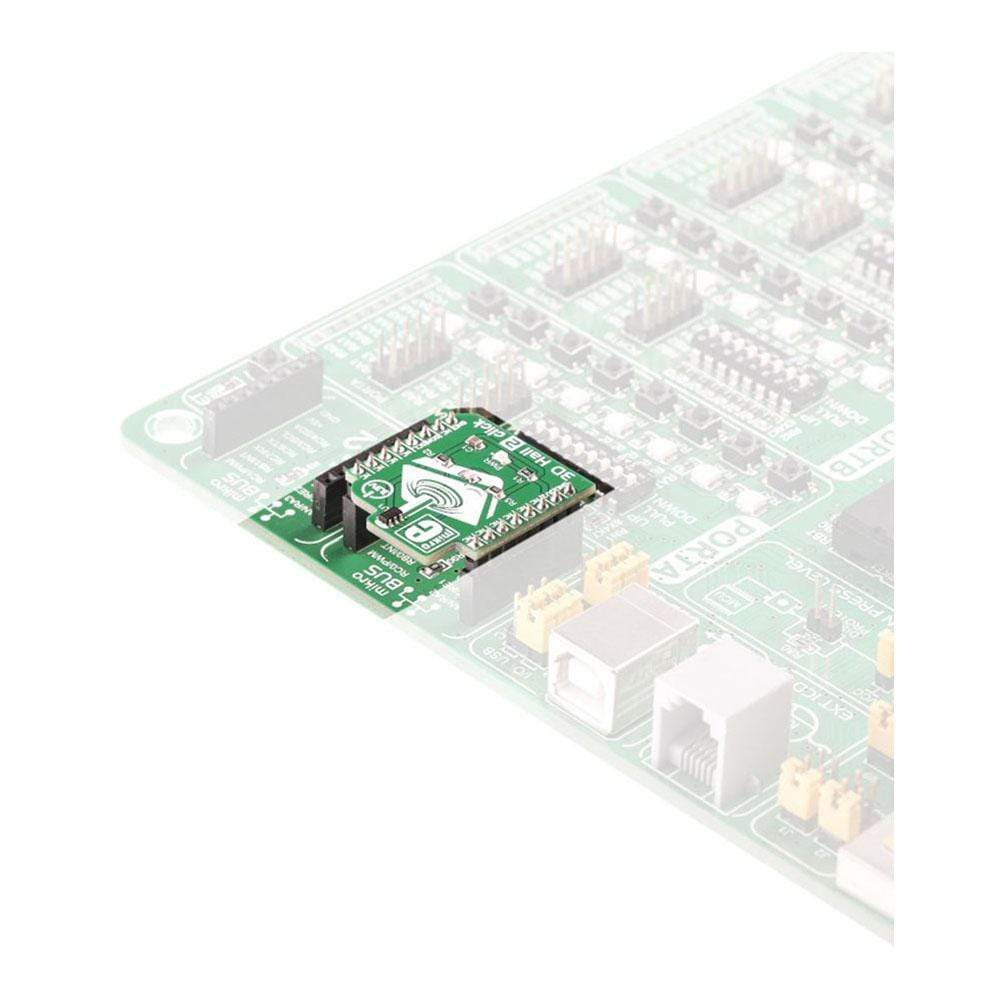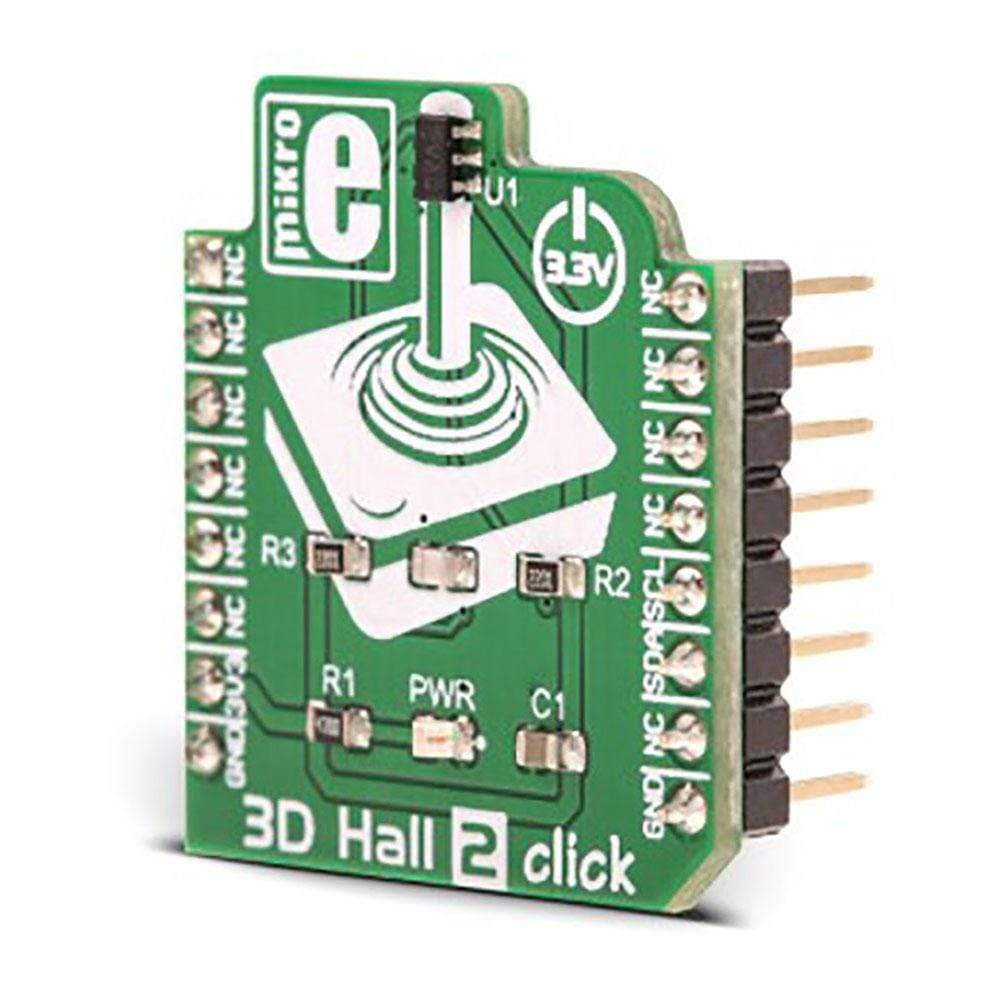
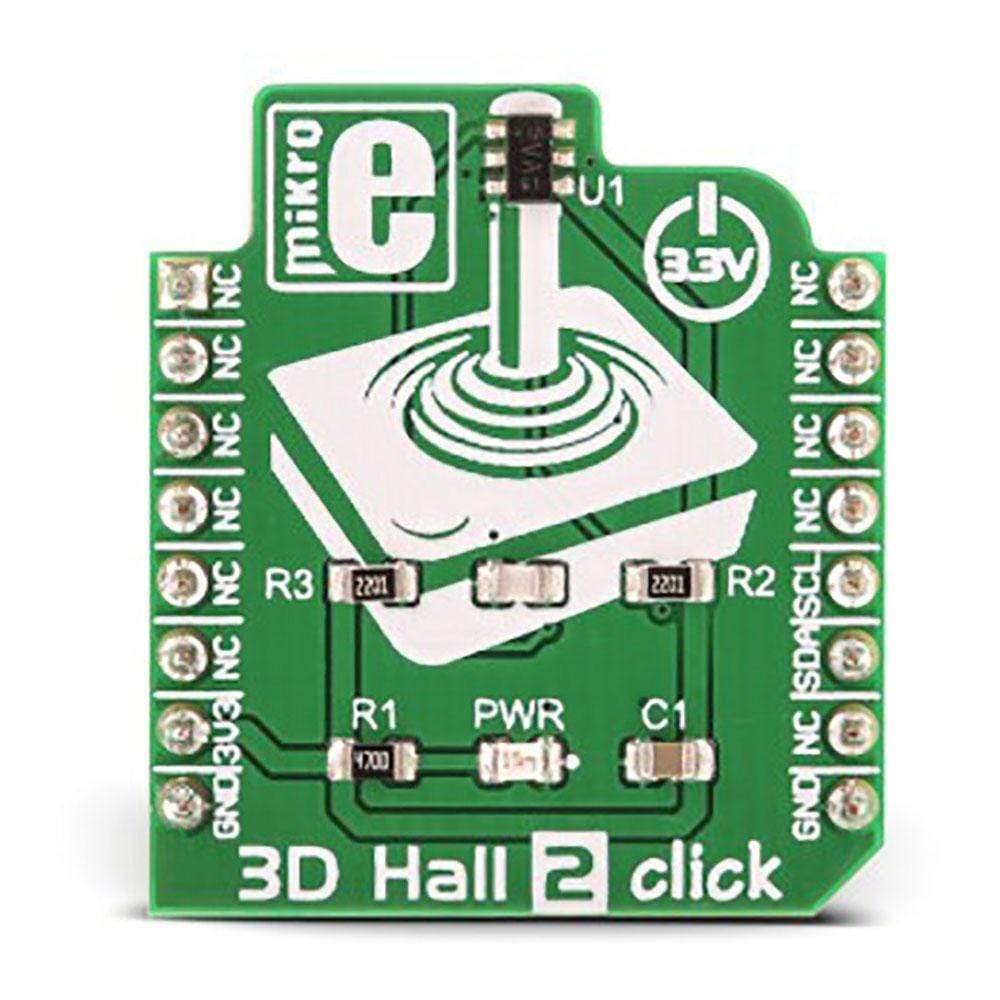
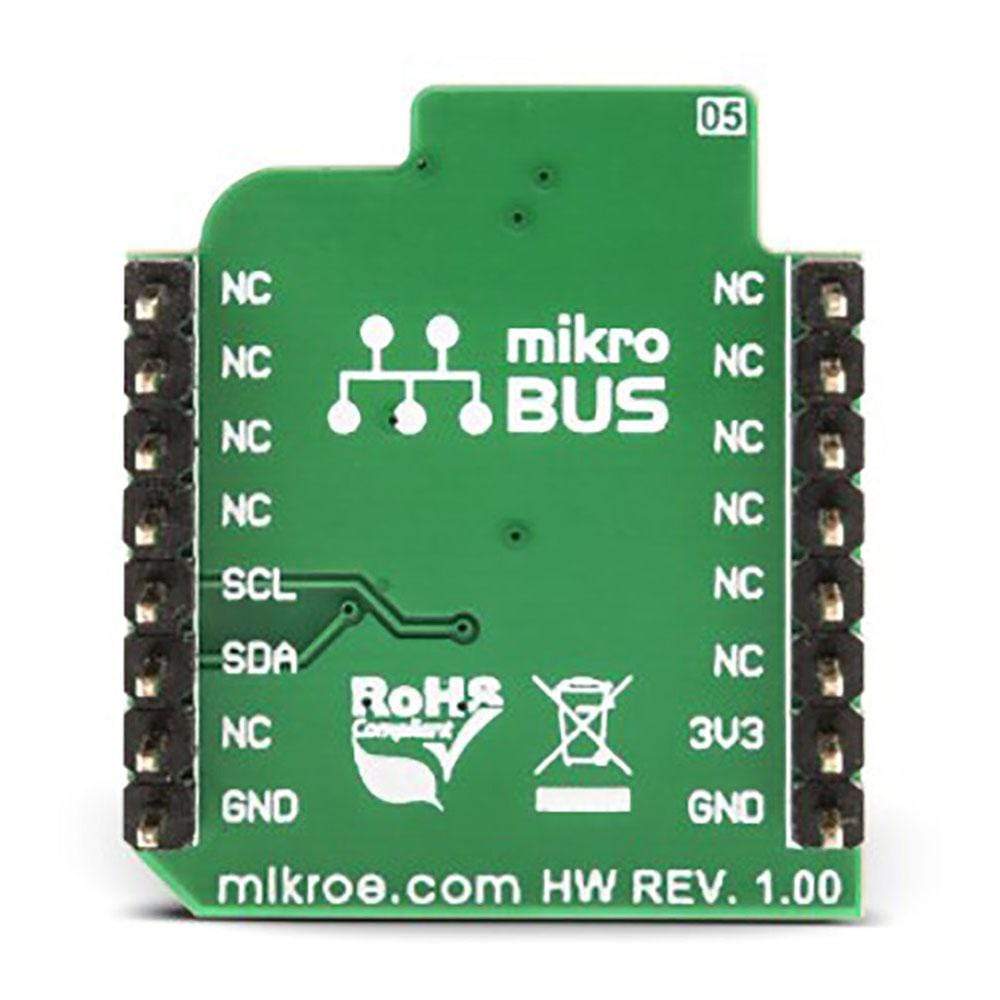
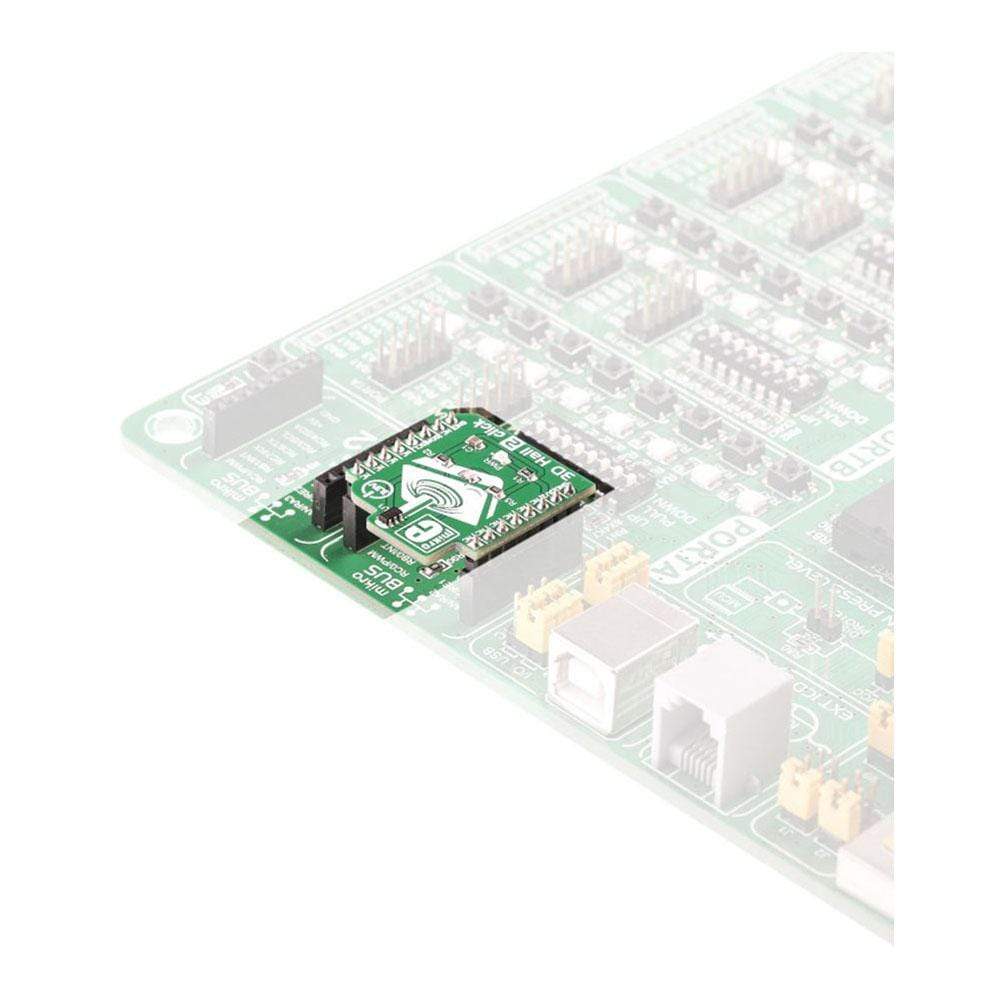
Overview
The 3D Hall 2 Click Board™ is a very accurate magnetic field sensing Click Board™, used to sense the magnetic field strength in three perpendicular axes. It relies on a TLV493D-A1B6, a low power 3D magnetic sensor from Infineon. This sensor has a separate Hall sensor for each axis, which allows a very reliable magnetic field sensing in 3D space, offering the basis for accurate angle calculations.
The TLV493D-A1B6 sensor uses an industry-standard I2C communication interface and requires a very low count of external components. The I2C interface is also used for the chip reset, so the sensor features a very low count of pins.
Downloads
Das 3D Hall 2 Click Board™ ist ein sehr genaues Click Board™ zur Magnetfelderfassung, das zur Erfassung der Magnetfeldstärke in drei senkrechten Achsen verwendet wird. Es basiert auf einem TLV493D-A1B6, einem stromsparenden 3D-Magnetsensor von Infineon. Dieser Sensor verfügt über einen separaten Hall-Sensor für jede Achse, was eine sehr zuverlässige Magnetfelderfassung im 3D-Raum ermöglicht und die Grundlage für genaue Winkelberechnungen bietet.
Der TLV493D-A1B6-Sensor verwendet eine I2C-Kommunikationsschnittstelle nach Industriestandard und erfordert nur sehr wenige externe Komponenten. Die I2C-Schnittstelle wird auch für den Chip-Reset verwendet, sodass der Sensor nur sehr wenige Pins hat.
| General Information | |
|---|---|
Part Number (SKU) |
MIKROE-3190
|
Manufacturer |
|
| Physical and Mechanical | |
Weight |
0.017 kg
|
| Other | |
Country of Origin |
|
HS Code Customs Tariff code
|
|
EAN |
8606018713653
|
Warranty |
|
Frequently Asked Questions
Have a Question?
Be the first to ask a question about this.

